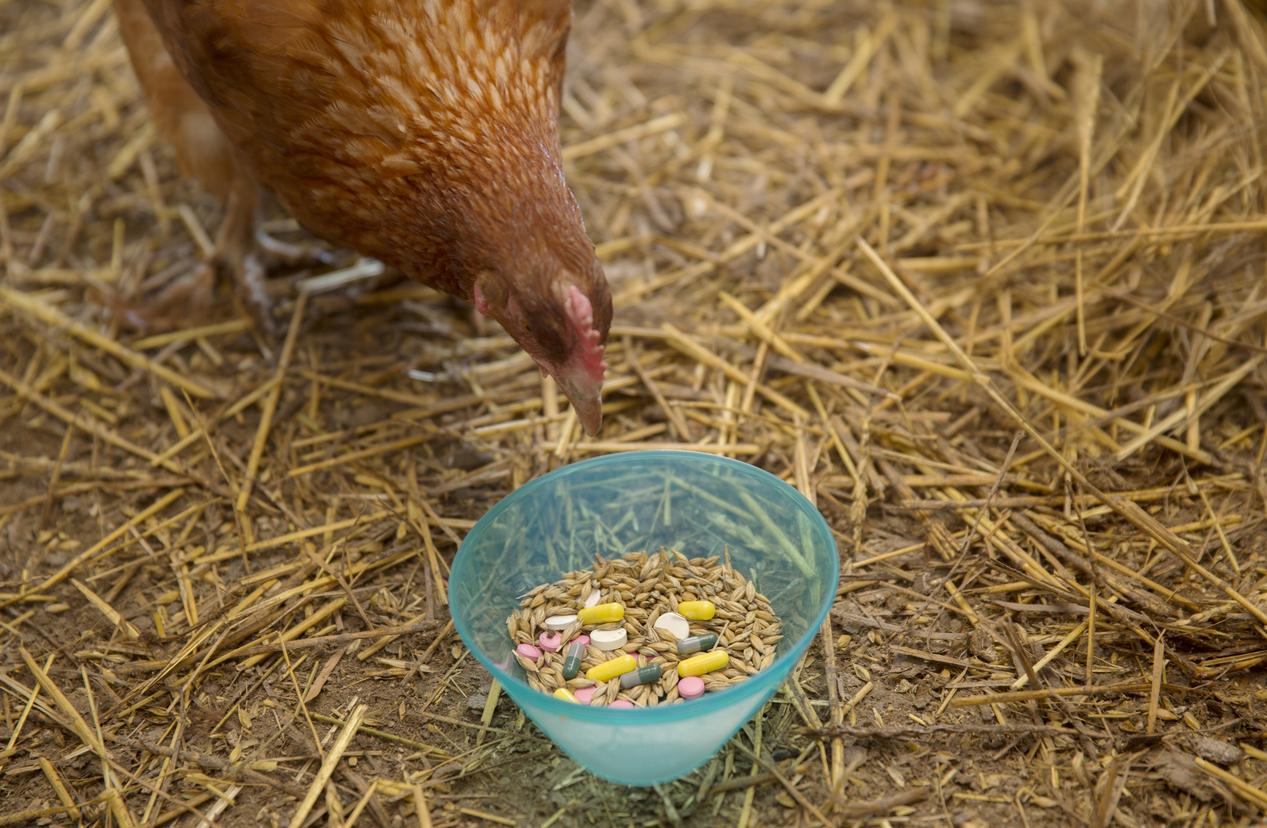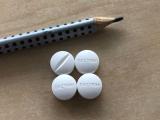As concern over increasing antibiotic resistance in humans and food-producing animals grows, farmers are being confronted with the challenge of raising healthy animals while using antibiotics more judiciously. And while there are numerous alternative products that are helping farmers and veterinarians reduce antibiotic use, many questions remain about how well they work and whether they can eventually replace antibiotics in large-scale commercial farming operations.
That's the main takeaway of a new report from the Pew Charitable Trusts on alternatives to antibiotics in animal agriculture. The report looks at some of the most widely used alternative products—such as vaccines, probiotics, and prebiotics—and finds that while there are some antibiotic alternatives that have shown promising results for growth promotion and disease prevention, their efficacy tends to vary across animal populations. In addition, significant data on how well some of these products work in real-world settings remain scarce.
"Research efforts to date have investigated a very large and diverse group of potential alternatives to antibiotics, often with at least somewhat promising results," the report says. "However, in some studies efficacy has been evaluated only experimentally, which probably neither reflects real-world husbandry conditions on commercial operations nor the target animals."
The report, which summarizes the available evidence for efficacy of antibiotic alternatives in each major food-producing species on the basis of a review of existing literature and interviews with experts, concludes that priority should be placed on the areas of greatest need in animal agriculture to reduce or even phase out antibiotics.
"Research funding will always be somewhat limited, and it is really important that these scarce resources are dedicated to where they can have the biggest impact," Karin Hoelzer, DVM, lead author of the report and a senior officer with Pew's antibiotic resistance project, told CIDRAP News.
Poultry industry leading the way
While farmers have been using antibiotic alternatives for several years, increasing interest in these products has been spurred by regulatory action aimed at reducing antibiotic use in food-producing animals. Under new US Food and Drug Administration (FDA) rules that went into effect Jan 1, farmers can no longer use medically important antibiotics for growth promotion, and they will need a prescription for continued use of these drugs for disease prevention.
In addition, consumer sentiment is playing a role, with several major fast-food chains and large poultry producers announcing that they will start sourcing all their chicken from producers who don't use medically important antibiotics. That's one of the reasons poultry farmers have taken the lead in using alternative products.
"We know that in chicken a number of alternatives are already successfully used, including prebiotics, probiotics, and in-feed enzymes," Hoelzer said.
Tim Johnson, DVM, a professor of veterinary medicine at the University of Minnesota and one the experts consulted for the report, said the poultry industry, in response to the growing consumer appetite for chicken raised without antibiotics, has taken the lead in testing alternative products and figuring out which type of product works best for a given company.
"The broiler industry—particularly companies like Tyson, Perdue, and Cargill—has really latched on to the idea that with a no-antibiotic-ever platform, they need to have products that will at least help gut health and will help reduce disease and mortality," Johnson said. "They're very big believers in these products."
Among the most widely used and researched alternative products in the poultry industry, aside from vaccines, are prebiotics and probiotics, both of which can help beneficial microorganisms in the gut outcompete harmful bacteria. They are typically added to feed and water, Johnson explained, to set up the gut to allow for the colonization of beneficial bacteria.
As the Pew report notes, the Food and Agriculture Organization of the United Nations has concluded that probiotics can have significant positive effects on the productivity and health of poultry, and a number of studies have shown the agents to improve productivity and reduce mortality in poultry flocks. But the data on prebiotics have been more inconsistent, with efficacy affected by several factors including the type of prebiotic, age and health status of the animal, housing type, and management practices.
Probiotics are also being increasingly used in the beef cattle and dairy industries to increase productivity and prevent disease. In addition, beef cattle and dairy farmers have been using immune modulators, which are placed in feed to elicit a response from the host immune system. The idea behind immune modulators, according to Johnson, is to boost the immune system to prepare it to respond to vaccination, so that a robust response to antigens occurs. In addition, the modulators can help prepare the immune system for disease challenges.
The Pew report found that while several different alternative products, including probiotics, in-feed enzymes, antimicrobial peptides, and organic acids have shown a potentially positive impact on growth promotion and disease prevention in swine, the underlying mechanisms in some of these products aren't always understood and much more research is needed.
"There's a lot of work going on in swine right now, but we don't fully understand how some of these things work," Johnson said.
Looking at other factors affecting animal health
Overall, Johnson added, while consistency is lacking in many of the antibiotic alternatives and there's no current product that will replace antibiotics in food-producing animals, a combination of these alternatives, strategically used, "can really offset the effects you get when you stop using antibiotics."
He believes alternatives are already having a positive impact on how many antibiotics are used in food-producing animals. But he also cautioned that alternative products are susceptible to the same issue raised by overuse of antibiotics: resistance. There's been some evidence of pathogens becoming resistant to the inhibitory effects of probiotics, for example. "We need to be careful about how we use these things, and not just dump them into feed all the time," he said.
Gail Hansen, DVM, a public health and animal medicine consultant, says that it's clear that while there is a lot of anecdotal evidence about how well some of these antibiotic alternatives work in different animal species, much more research is needed. She said she has spoken to farmers who are very open to using alternative products in lieu of antibiotics, but she thinks the lack of efficacy data is likely preventing wider adoption of the products.
"To use something commercially in this day and age without having good data to support it is probably not going to happen," she said.
More importantly, though, Hansen would like to see less focus on "exchanging one molecule for another," as she puts it, and more focus on all the factors that impact animal health for better or worse, including farm management, animal husbandry practices, the types of pathogens that affect different species, and biosecurity.
"Instead of saying 'let's switch out this thing for that thing,' let's look at the whole system and see if there are better ways of dealing with the whole system," she said. "If we can make the animals healthy, and use fewer antibiotics in doing that, then that's a win-win for everybody."
See also:
Jul 10 Pew Charitable Trusts report
























